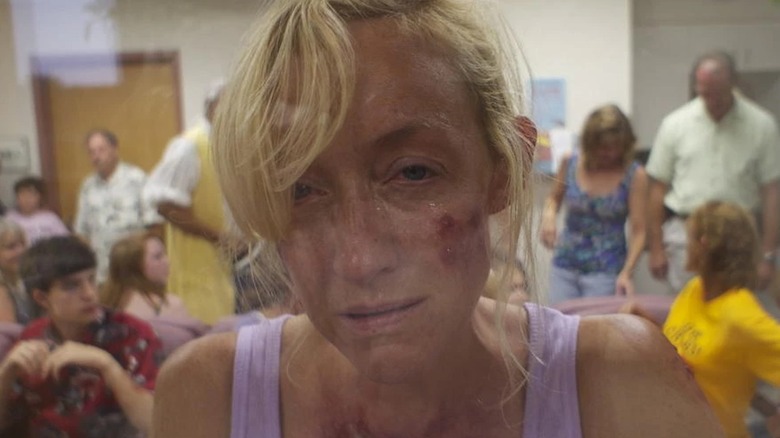Barry Levinson is not a name you would normally associate with the horror genre. The Oscar-winning director - best known for 'Rain Man', 'Wag the Dog' and 'Diner' - leans mostly towards satirical comedies or suspenseful drama-thrillers throughout his career. While preparing for a documentary about the pollution hitting the Chesapeake Bay in 2012, Levinson decided to abandon the project in favor of a found-footage eco-horror that would mix fact with fiction to disturbing effect. That venture was The Bay, a mockumentary-style exploration of a contagion premise that feels almost familiar in the context of our post-pandemic world. Despite being the director's only foray into horror, Levinson reinvigorates the found footage subgenre by injecting it with one of the most primal fears accompanying the pandemic: the callous cruelty of willful inaction.
It is worth noting that Levinson incorporated the scientific research for the abandoned Chesapeake documentary into the film's narrative framework and created an aura of credibility by shooting some of the footage with commonly used digital cameras. In an interview with Mother JonesLevinson explained how he had to take an unconventional approach to filmmaking to do justice to the inner workings of the found footage genre:
“We made this movie for $2 million, shot it in 18 days with a small crew using many first-time actors, and used 21 different types of video cameras, including iPhones and inexpensive underwater video equipment, to make it look believable. This made editing more complicated.
The mix of fact-based fact and inspired fiction helped create something truly terrifying, evoking a delicate suspension of disbelief that is perhaps one of The Bay's greatest strengths. While not perfect, this overlooked horror entry must be scrutinized for its uncompromising vision, along with its brutality and gruesomeness that surface unsettling quasi-realistic undertones.
Barry Levinson's The Bay presents apathy as a real source of terror
In Levinson's 2012 film, journalist intern Donna (Kether Donohue) is assigned to cover a Fourth of July celebration in Claridge, a quaint little Maryland town that thrives on its water supply. Problems arise when a local chicken farm is found to be dumping toxins that end up polluting the Chesapeake Bay, and these snowball into townspeople who become sick and show physical symptoms. The Centers for Disease Control (CDC) is contacted once the situation gets out of hand, but a mixture of apathy and inaction makes things much, much worse. Balls of dead fish wash ashore, infected people begin to drop dead after writhing in unimaginable pain, and dead birds begin to litter the bloody streets. Donna and her cameraman witness these events firsthand, torn apart documenting the horrors of a disaster in real time and sheer helplessness when faced with the bizarre symptoms of the infected.
Not everything that unfolds on screen is new or unique, but Levinson is able to use some well-trodden tropes to heighten the tension in a situation that has no silver lining. Donna's footage, later confiscated by the government and then leaked by a third party, is interspersed with frantic Skype calls, cellphone videos and digital blogs that capture the visceral nature of the unchecked epidemic. Body horrors of pus-filled rashes, violent vomiting and exploding entrails add to the heightened narrative, with a few mutated creatures thrown in for good measure. No one knows what to do, and those in a position to do something, like the town's mayor Stockman (Frank Dill), seem more threatened by the prospect of Claridge's losing tourists.
What I appreciate about The Bay is that it brings environmental horror to the fore and exposes our callousness to the environment even as our transgressions spoil the sanctity of life. There's more to this story than the revulsion it evokes, as we're forced to grapple with the evidence left behind by countless mini-stakes and anxious digital calls that dissect the nature of the mutated outbreak. The shameless display of callous apathy that accompanies this disaster—both during and after—isn't pretty, and Levinson deliberately ends The Bay on this bitter, unsettling note.
Source link


